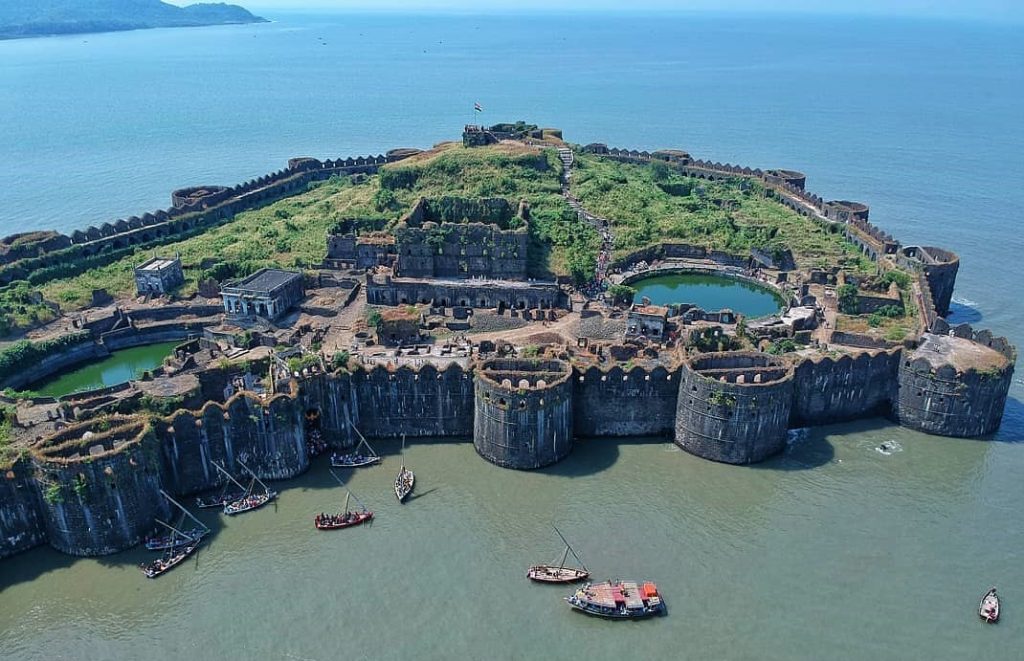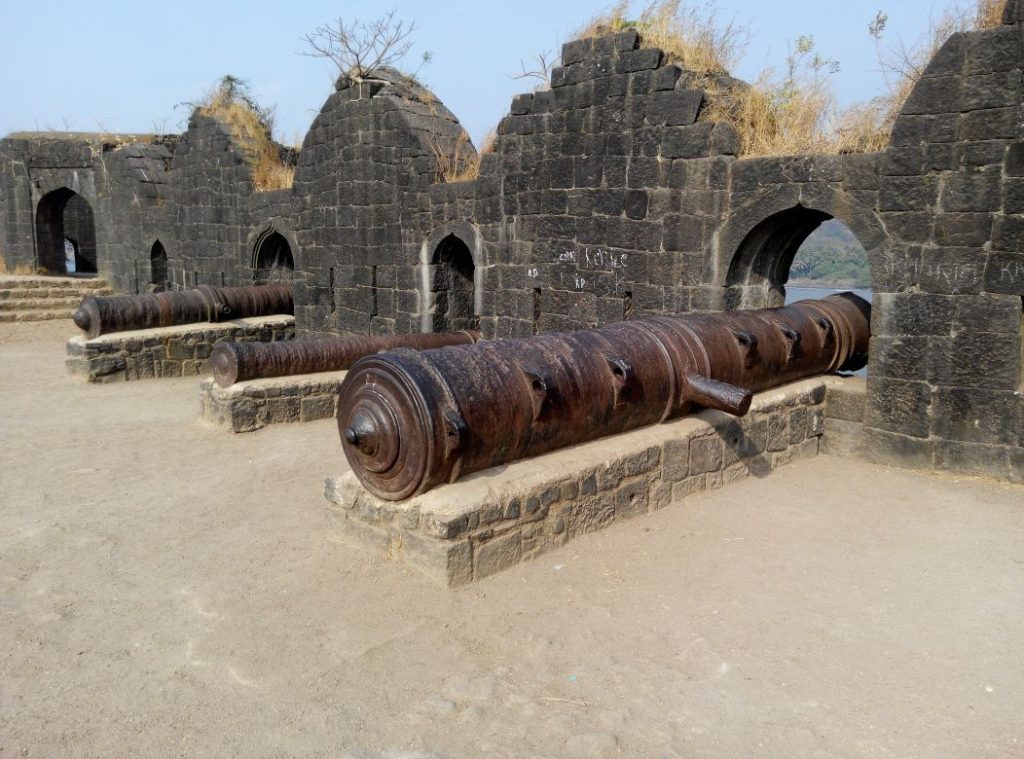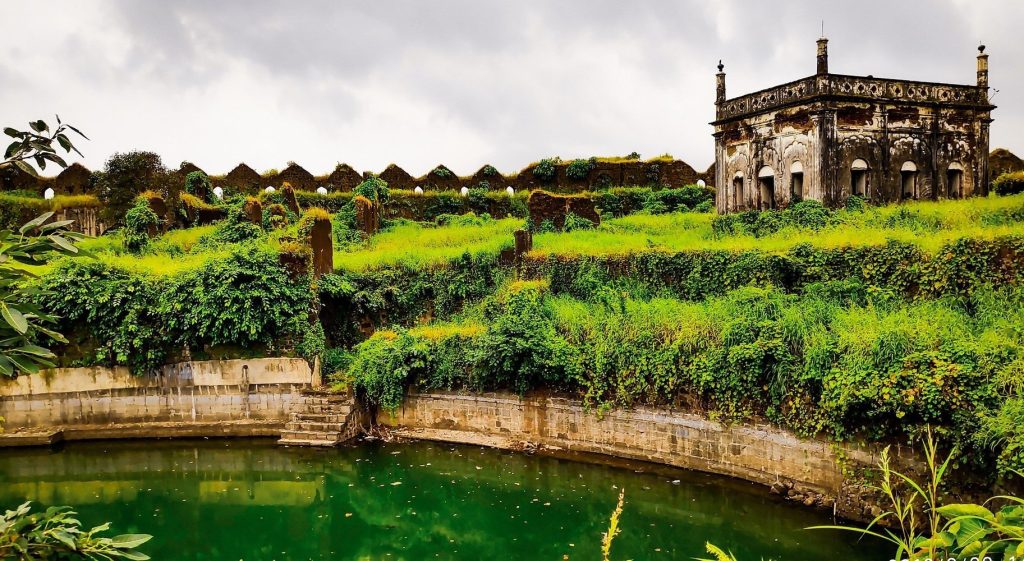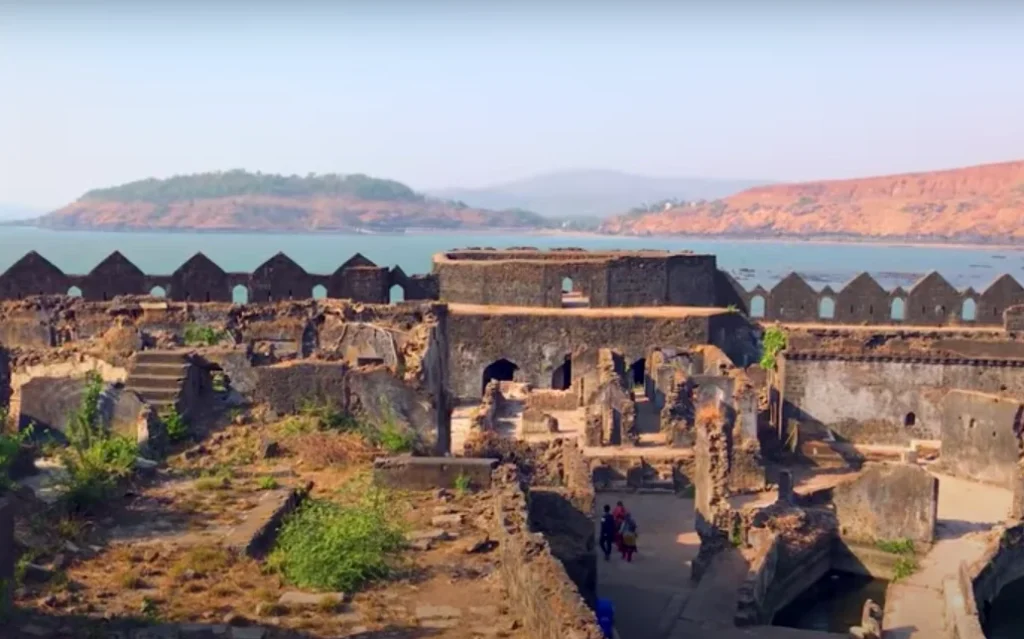Murud-Janjira is the local name for a fort situated on an island just off the coastal village of Murud, in the Raigad district of Maharashtra, India. The word Janjira is not native to India, and may have originated after the Arabic word Jazeera, which means an island. Murud was once known in Marathi as Habsan (“of Habshi” or Abyssinian). The name of the fort is a concatenation of the Konkani and Arabic words for Island, “morod” and “jazeera”. The word “morod” is peculiar to Konkani and is absent in Marathi. Murud-Janjira Fort is situated on an oval-shaped rock off the Arabian Sea coast near the port town of Murud, 165 km (103 mi) south of Mumbai. Janjira is considered one of the strongest marine forts in India. The fort is approached by sailboats from Rajapuri jetty. The main gate of the fort faces Rajapuri on the shore and can be seen only when one is about 40 feet (12 m) away from it. It has a small postern gate towards the open sea for escape. The fort has 26 rounded bastions, still intact. There are many cannons of native and European make rusting on the bastions. Now in ruins, the fort in its heyday was a full-fledged living fort with all the necessary facilities, e.g., palaces, quarters for officers, mosque, two small 60-foot-deep (18 m) natural fresh water lakes, etc. On the outer wall flanking the main gate, there is a sculpture depicting a tiger-like beast clasping elephants in its claws. These 4 elephants symbolize Shivaji’s major enemy dynasties on which he possessed control – Adil shahi, Qutb Shahi, Mughal shahi and Nizam shahi, whereas the tiger-like beast symbolizes control of Shivaji on these. There are prominent Ashoka Chakras on all major gates of the fort Janjira. There are images of playing elephants, lions, etc. The palace of the Nawabs of Janjira at Murud is still in good shape. A special attraction of this fort are 3 gigantic cannons named Kalalbangdi, Chavri and Landa Kasam. These cannons were said to be feared for their shooting range. Another gate to the west is sea-facing, called ‘Darya Darwaza’. There is also another fortress, named Ghosalgad, which is located on top of the hill around 32 km (20 mi) east of Murud-Janjira, that was used as outpost for the rulers of Janjira. The Fort of Janjira on the sea is the only one of its kind. Janjira Jal-Durg (Sea Fort) was constructed by Malik Ambar, an Abssynian minister in the service of the Sultan of Ahmednagar, who belonged to the famous Nizamshahi dynasty. The fort, built at the end of the 17th Century, is almost entirely intact even today, despite the ravages of wind and tide, a testimony to the marvels of ancient engineering. According to all accounts, the sea fort of Janjira could not be conquered by any of the kings ruling the neighboring territories. Surprisingly, not even Shivaji could acquire it despite 13 expeditions to conquer the fort. His son, Sambhaji, tried a unique approach to capture the fort: digging an underwater tunnel to enter. But he too failed in his attempt. Not to be deterred, Sambhaji constructed another fort just across the bay, called Kansa. Most of the earth that was dug up to build the tunnel was used in the making of this second fort, which was to be the base for future attacks on the sea fort of Janjira. This fort took 22 years to build and is constructed on 22 acres of land. In a journey back in history, visitors can gain access to the Janjira fort from Rajapuri, a small village on the coast. After a short ride in a small boat, one can enter the fort through the main entrance. The fort is oval shaped instead of the usual oblong or square shape. The fort wall is about 40 feet high and has 19 rounded porches or arches, some of which still have cannons mounted on them, including the famous cannon Kalaal Baangadi. These cannons were largely responsible for repelling oncoming enemies from the sea. Inside the fort walls, the ruins of a mosque, a palace and bath with water channeled from streams, tell of ancient times when royal ladies occupied the quarters. The deep well with cold and sweet water – a wonder of nature in the midst of the saline sea, still provides water to quench the thirst of the weary visitor. Gazing into the horizon from the ramparts of this magnificent fort overlooking the sea, one cannot but acknowledge its great strength that withstood a number of invasions. This invincible fort remained unconquered until it became part of Indian territory after Independence from the British in 1947.
Gallery



